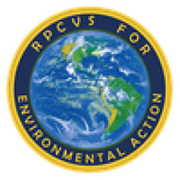
By Rick Kaye
In 1995, I began a two-year service as an AmeriCorps National Service Member for a watershed science education program in Sonoma County, Ca. That experience led to an additional three years in public service as a Peace Corps Agroforestry volunteer, working with subsistence farmers in Panama. My career work today is a direct result of these experiences.
Sure enough, working with subsistence farmers was an eye-opening opportunity and challenge. Equally so, I’m certain that much of the benefit was for me, though my earnest work to guide and cheerlead was well appreciated. Lots to say about that, but one point cannot go unwritten: there was always a farmer, here and there, that had a gut sense on how to pull together the resources of water, soil, livestock, crops, and energy to bring the farm and the environment back to life.
Twenty-five years later I’m doing what I’ve learned abroad, as Farm Manager for Puma Springs Vineyards, a certified organic operation. We are atypical. Organic certification represents only 2% of vineyards in the region. That “climate crisis” in Panama twenty-five years ago is our climate crisis today. The solution: we must pull together the resources of water, soil, livestock, crops, and energy.

The Carbon Farm Plan is a unique tool of the developed world, but I’ve seen it before in the gut sense of Panamanian subsistence farmers like Francisco Rodriguez and Eliseo Salina Surdo. Both were sent to Panama City at some point in their education, completed their basic schooling there, and returned to their rural communities to farm by choice. This is highly atypical in developing countries. The practices I advanced at Puma Springs were practices I already knew by observing Francisco and Eliseo’s farms many years ago.
If we put a letter grade to it, the farm I manage would receive an “A-“ for practices underway. Once we fully implement the plan, the vineyard will function as if it received 7” more rainfall each year. We are already half-way there, and we see the changes.
"Ultimately, the credit is due to the farmers whose shoulders we stand on"
Ultimately, the credit is due to the farmers whose shoulders we stand on, around the world, yesterday, today, and tomorrow. It may not be enough to overcome broad changes to our climate underway. It is the road less traveled. But it is not a new road. It begins with patience and leads to transformation. We change the climate within ourselves first, and we then pull together the resources.

